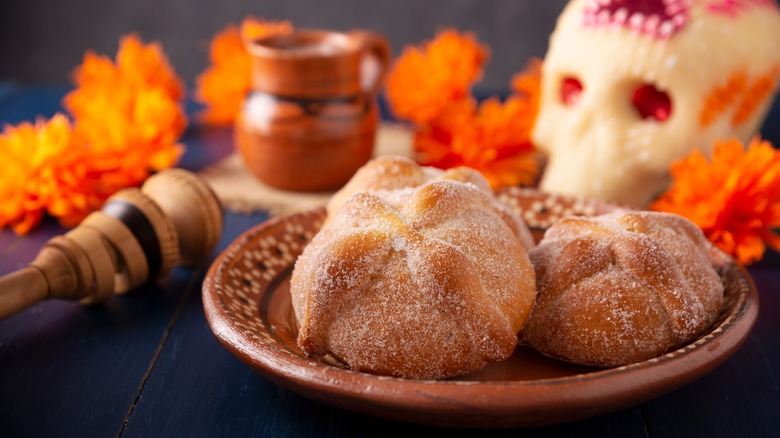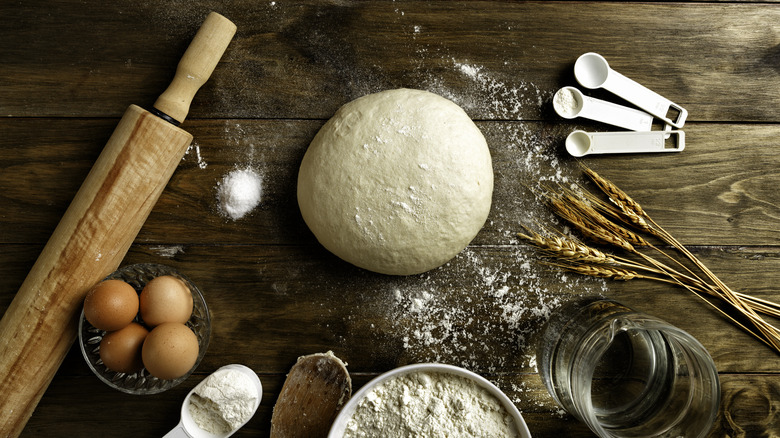Why Pan De Muerto Is Perfect For Bakers Looking To Up Their Game
Like many traditional foods eaten on Day of the Dead, pan de muerto is as symbolic as it is tasty. The purpose of this lesser-known, sweet-tasting bake, which translates to "bread of the dead", is to celebrate and remember loved ones who have passed on. Francisco Flores, Iberostar regional chef of Mexico, told Mashed, "You don't find this recipe in a lot of places, but it's very traditional in Mexico. And it's also really good."
When the holiday begins, families will place pan de muerto on altars (called ofrendas) for spirits to partake from, and each one may feature a unique style depending on what region it's prepared in. Skulls, crossbones, teardrops, and petals are some common designs that are added to the top of each loaf, often baked in a round shape to symbolize the circle of life. It can also be made in the shape of a person or animal, and is typically flavored with a hint of anise or orange zest.
Unlike the potentially stomach-ache-inducing act of eating sugar skulls on Day of the Dead, this is one food you'll actually enjoy eating when the November holiday comes around. A good loaf of pan de muerto will be dense yet moist, golden, and glazed with an egg wash, sugar mixture, or melted butter. As Flores explains, even though this bread is a rare find outside of Mexico, there's a lot that goes into pan de muerto that makes it a meaningful delicacy that more bakers should attempt.
Pan de muerto looks harder to make than it is
According to Chef Francisco Flores, this traditional Day of the Dead food incorporates several techniques, so making it yourself may seem like a daunting challenge. While the finished product certainly looks impressive, the process behind baking homemade pan de muerto is so easy that even young kids can join in to help honor their loved ones and ancestors. Those particularly skilled at seasoning, kneading, rolling, and proving bread may find making it a cinch, but even for less skilled bakers who haven't done a lot of breadmaking, turning the yeasted dough into an impressive work of art isn't all that hard.
Regardless of what recipe you use, before pan de muerto starts doubling in size as it rises you can mold small pieces of dough into the shapes you want to use to top your symbolic bake. Once it's fully baked, the shapes should be distinctly visible, and it doesn't have to be a complicated design unless you want it to be. "The decoration," Flores told Mashed, "is dusting with sugar, but you can take it from a very basic procedure to doing something really professional with decorations." After glazing it and sprinkling it with granulated sugar, your baking creation is ready to be enjoyed with friends and family at the dinner table or shared in memoriam at a loved one's ofrenda.

